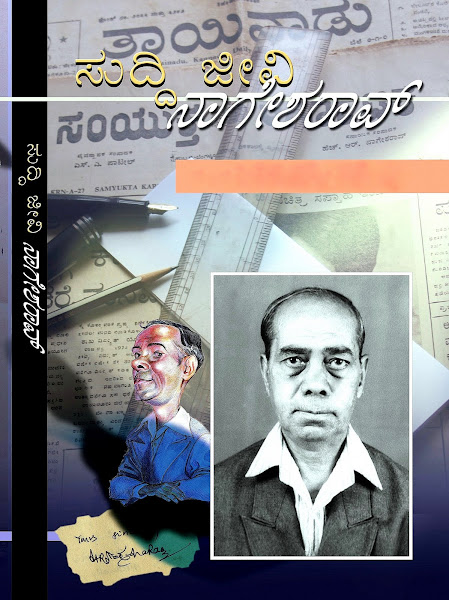 Handwritten Magazines were order of those days!
Handwritten Magazines were order of those days!HRN had a passion for bringing out handwritten magazines during his school days. He started with 'HaNe Baraha' (1941), followed by 'SOmari' (1941-42), 'Chitragupta' (1941-42), 'Kannada Kechchu' (1941-42) etc. While the first two were humour magazines, the last one was dedicated for Mysore Unification. The 'Chitragupta' and 'Karavala' (none of the issues are available today) were used as a medium to spread the message of freedom movement. HRN sent the issues of 'Karavala' to RR Diwakar, then editor of Samyukta Karnataka in 1956 for his reference for an article on the participation of Media in Mysore for the freedom movement, which were not returned back.
The covering letter written to RRD dated 25.2.1956 HRN briefly describes the influence of such hand written magazines in and around Tumkur. Here is the translation of the portion of the letter.
 HRN is sitting in the first row, second from right
HRN is sitting in the first row, second from right......... As the students of S.S.L.C. four of my friends and me, were working for the handwritten magazine 'innEnu?' of the student federation. When the activities of the federation caught the attention of police, there were series of arrests. There came the situation when we were not able to continue our activities together, hence we separtated. Five of us started 'karavaaLa', a hand written magazine, for the distribution to the shops in the prime localities. They were not only paying us the subscription, but used to make two copies of the same, and stuck them outside their shops. The balance were distributed further for private circulation. We used to send five copies each to Gubbi, Kyatsandra, Tiptur, Madhugiri and Sira representatives. We used to send them through the bus passengers at times, on occasions through post. At times of difficulty, we used to bundle them along with the grocery bags or used to send our own representatives. All those villagers used to further distribute them with meticulous copying. Our aim was to spread the Gandhian Message of non-violent agitation. We used to carry articles from the veteran freedom fighters. Starting from 12 copies, our 'hand-writing order' rose to 25 within two years. Within Tumkur the number of copies were getting increased to 50-60. These were atleast got circultated to 500-600 people those days. Many more people were reading them at the market place, when stuck on the shop walls, till the police began tearing them off. Our guess on the total number of readers was around 2000.................'

No comments:
Post a Comment